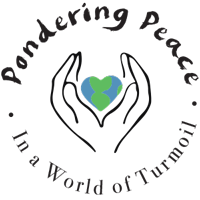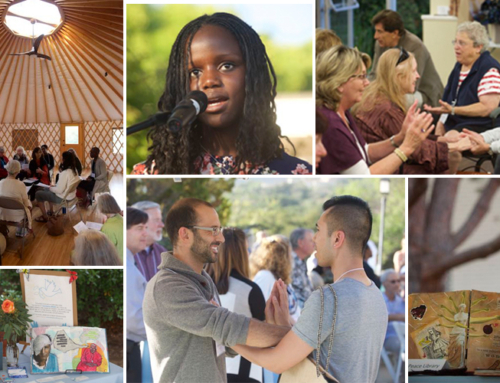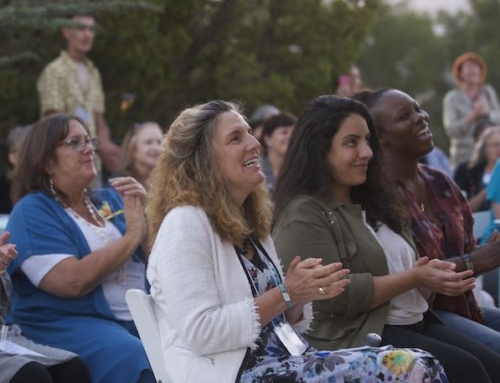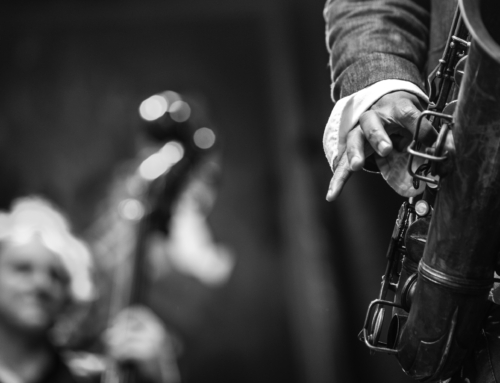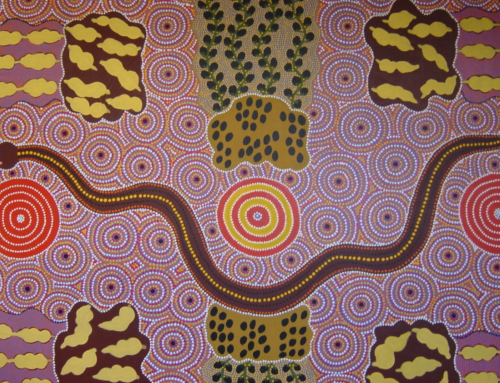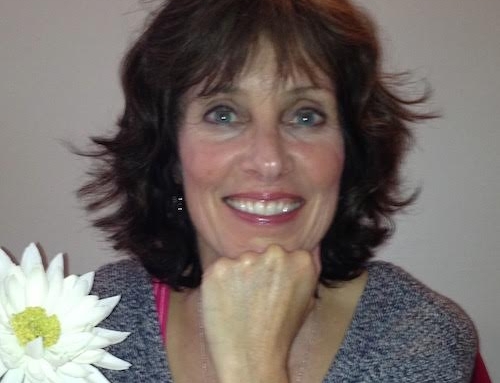Pondering Complexity in A Small World
Dori Koehler, P.h.D
Mythological Studies, 2012
There is just one moon and one golden sun
And a smile means friendship to everyone.
Though the mountains be wide
And the rivers divide
It’s a small world after all.
It’s a world of laughter, a world of tears
It’s a world of hope and a world of fears
There’s so much that we share, that it’s time we’re aware
It’s a small world after all.
–The Sherman Brothers
At the Coming Home event in January, I listened to Jennifer Selig’s talk about cultivating a depth psychology of extroversion. Since then, I’ve been thinking about the relationship between the inner and outer worlds. As I ponder my role in cultivating peace, I return to the tension between the two, specifically as it relates to what we witness, what we endure, what psyche can hold, and how we relate to the world. I ask the question: does peace begin in the inner or the outer world? Can one truly have inner peace in a world of turmoil, or is that somehow disingenuous? And vice versa. Can we cultivate peace in the outer world if the inner world is not at peace? What if relating to the outer world is an obstacle to developing inner peace?
This tension is dynamic. When we internalize the world’s brokenness, how can we help but be broken ourselves? Trauma literally becomes part of our DNA. It spreads across us, soaking us to the bone. Simply living life may be enough to make us pull into the inner world. I know it does for me. I often feel too small to have an impact, so I make my outer world even smaller, to focus on transcending it, rather than engage with the complexities of it. How can one maintain their connection to the world and not fall victim to despair?
I answered this question for myself by coming to Pacifica. Ten years ago this summer, I applied to Pacifica’s myth program. I answered many questions as part of the application process, but one particular question continues to resurface from time to time like the answers of a magic eight ball – what do you think is the significance of mythology?
Campbell connects the acquisition of personal myth to the boons of The Hero’s Journey; an accurate assessment. Our stories are the roots of our identity. There is nothing deeper and more central to the psyche of humanity than the stories that tell us who we are. But they also reflect the tension between the inner and the outer worlds of psyche. They reveal our wounds, our traumas, and our pathos. They show us where our ideals and our behaviors don’t quite line up. So, what do we do with our stories when they are broken, when they are too full of reality, to painful to bear?
My answer today is similar to the one I gave all those years ago. I go to myth, because it holds the keys to healing. The stories that resonate and create culture are the sacred locale to which I go when I ponder ways to incorporate trauma, cultivate peace, and heal soul.
There is a concept in Judaism that I’ve always admired, one that holds a central position in the way I think about the role of and significance of myth and mythologists – Tikkun Olam, literally the repair of the world. According to these mystical stories, the divine placed some of its own self into vessels of light. During creation, those vessels were shattered into pieces, trapping fragments of divine light into the shadow matter of incarnation.
I return to this idea whenever I ponder peace. I believe that peace can only come through healing, healing can only come through restoring justice, and restoring justice can only begin through really listening to each other; not breaching our boundaries and pretending that our differences don’t matter, but honoring those boundaries, loving the reasons they are necessary, and seeing the beauty in them.
Repairing the world is our Pacifica motto. We work to be ambassadors for healing and peace in the world. The practice of Tikkun Olam suggests that there is opportunity everywhere to salvage a piece of the divine. As each of those pieces return to the source, we come to know divinity more clearly. We heal the world through that process.
As I ponder my role in this concept, I find it significant that Judaism suggests this work is completed piecemeal. The truth is no grand gesture can repair the entire world. There is only the momentary practice of picking up the broken pieces, nurturing them, and returning them to the self. We do it one piece at a time, and we all do our part.
For my part, I find peace in the mythic message of Disneyland; a message that influenced me as a child and taught me that peace is impossible without diversity, without a cacophony of voices each singing their own song in harmony with one another. I was three years old when I first visited Disneyland. It’s a Small World was and remains my favorite attraction. I was impressed by the subversive power of the message, because even as a child I was aware of the unlikelihood of it.
Think about it! This attraction opened in 1964, with the wounds of World War II fresh, the Cold War in full swing, the Cuban Missile Crisis and the death of the president in recent memory, Civil Rights struggles everywhere, and the Vietnam Conflict peeking around the corner. When UNICEF taps Walt to produce an exhibit for the 1964 New York World’s Fair, he responds by creating a gift for the children of the world, something to smooth the edges and provide relief from the world’s pressures if only for a moment. He responds by suggesting that we are more united than divided, a radical act that continues to resonate today.
The artists who came together to create the attraction, Mary Blair, the Sherman Brothers, Harriet Burns, and Walt Disney were ambassadors for peace in their time. Their work continues to stand for that message today. Richard Sherman once noted that the project was their “prayerful piece” or their “prayer for peace.” To me, this is a place where the inner and outer worlds of soul can relax and play, if only for a moment.
Sure it’s caricature. Sure it ignores nuance and complication in favor cuteness. Sure it’s part of America’s drive toward consumerism. But, it also appeals to the connections we make easily as children. And that is an act of healing the world.
Despite everything, I still believe in magic. In my small corner of the world, I ponder peace by listening to the voices of our small world sing and by believing that our differences are beautiful, that they can unite us, and that love can change the world. It’s a Small World punctuates that mythic message. It reminds me that coming together to celebrate our uniqueness through the eyes of our children makes the world a better place. It reminds me that love is a simple, radical act; an act with the power to change the world.
